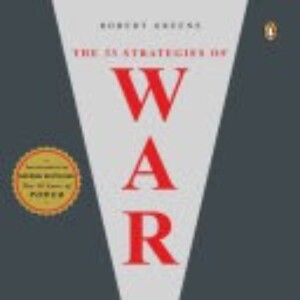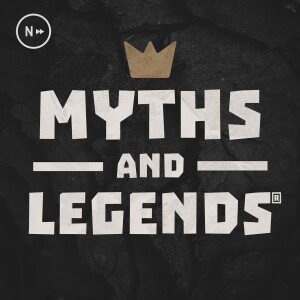

"The 33 Strategies of War" is a book written by Robert Greene, a well-known author and speaker recognized for his works on power dynamics, strategy, and human behavior. Greene was born on May 14, 1966, in Los Angeles, California, and has a diverse background that includes studying classical studies at the University of California, Berkeley, as well as working in various jobs, including in the film industry and as a writer.
Greene's writing is heavily influenced by historical events, philosophical concepts, and examples from literature and the arts. He is best known for his earlier books, such as "The 48 Laws of Power," "The Art of Seduction," and "The 50th Law," which explore themes of manipulation, power, and strategy. His style often combines historical anecdotes with contemporary examples, making his concepts highly relatable.
"The 33 Strategies of War," published in 2006, draws inspiration from military strategy and applies those principles to personal and business situations. The book is structured around 33 distinct strategies, divided into five sections: Self-Directed Warfare, Organizational (Team) Warfare, Defensive Warfare, Offensive Warfare, and Unpredictable Warfare. Each strategy is illustrated with historical examples, making the book not only a practical guide to strategic thinking but also a historical survey of warfare.
The context of the book can be understood in several ways:
- Historical Context: Greene examines a wide range of historical military conflicts and draws upon the tactics of renowned historical figures such as Sun Tzu, Napoleon Bonaparte, and Carl von Clausewitz. This historical framing provides depth and context to the strategies discussed.
- Cultural Context: In the early 21st century, there was a growing interest in self-improvement, personal strategy, and understanding power dynamics in both personal and professional realms. Greene's work emerged at a time when readers were increasingly looking for guidance on navigating complex social and workplace environments.
- Psychological Insights: Greene incorporates psychological concepts into his strategies, emphasizing the importance of understanding human behavior, motivation, and the emotional aspects of conflict—whether in war or everyday life.
- Applicability: The book is not just for military strategists but appeals to a broad audience, including business leaders, negotiators, and individuals seeking to gain an upper hand in personal or professional challenges.
Overall, "The 33 Strategies of War" positions itself as a comprehensive guide to strategic thinking, blending historical analysis with practical advice, and making it relevant for a wide range of readers looking to navigate conflicts and challenges in various aspects of life.
Chapter 2 Analysis of main characters and plot"The 33 Strategies of War" by Robert Greene is a non-fiction book that presents various strategies and tactics drawn from historical battles, military theory, and philosophy. Instead of traditional characters and a narrative plot, the book introduces key concepts (or "strategies") that can be applied to various aspects of life, including business, personal relationships, and conflict resolution. Here are some core strategies and concepts:
- Self-Directed Warfare: This strategy emphasizes the importance of self-mastery and understanding one's strengths and weaknesses. It encourages individuals to reflect and strategize before acting.
- Organizational (Team) Warfare: This involves building a strong team and ensuring effective communication and loyalty among group members. It's about leveraging the strengths of others to achieve a common goal.
- Defensive Warfare: Greene discusses tactics for protecting oneself and conserving resources, focusing on strategy over brute force. This can include planning retreats and fortifying positions.
- Offensive Warfare: This strategy emphasizes taking the initiative and being proactive in achieving one's goals. It encourages making bold moves that can catch opponents off guard.
- Misdirection: Greene explores the concept of deception in strategy, suggesting that misleading opponents can create openings for victory. This involves disguising one's true intentions.
- Psychological Warfare: The book highlights the importance of understanding and influencing the mental states of others. This can include sowing doubt or confusion to gain an advantage.
By illustrating these strategies with historical anecdotes and examples, Greene guides readers in applying these concepts to various conflicts in their lives. The overarching theme is about using strategic thinking and tactical awareness to navigate challenges effectively.
Chapter 3 Theme Exploration and Analysis"The 33 Strategies of War" by Robert Greene is a comprehensive guide that draws parallels between military strategy and personal and professional conflict resolution. The book is structured into five parts, each detailing various strategies that can be employed in various aspects of life, such as business, relationships, and personal challenges. Here are some prominent themes and topics explored within the book:
- The Nature of Conflict:
- Greene emphasizes that conflict is an inherent part of human interactions. He articulates different forms of conflict, from overt battles to covert struggles for power and influence. Understanding the nature of these conflicts is crucial for success.
- Strategic Thinking:
- A major theme involves adopting a mindset of strategic thinking. Greene encourages readers to think several moves ahead, considering not only immediate outcomes but long-term consequences. This can involve analyzing opponents, predicting their moves, and adapting strategies accordingly.
- Flexibility and Adaptation:
- Greene underscores the importance of being flexible and adaptive in the face of changing circumstances. This theme is illustrated through historical examples of leaders and strategists who adjusted their plans in response to new information or shifting dynamics.
- Deception and Misdirection:
- Drawing from Sun Tzu's teachings, Greene explores the importance of deception as a strategic tool. Misleading opponents or creating illusions can provide a significant advantage in conflicts. This theme reflects the idea that perception often shapes reality in competitive scenarios.
- The Importance of Preparation:
- Preparation is a recurring theme throughout the book. Greene argues that thorough preparation minimizes risk and enhances effectiveness. This translates to understanding one’s strengths, weaknesses, and the context of the conflict.
- Leadership and Command:
- Leadership is examined extensively, with Greene discussing the qualities of effective leaders. He emphasizes charisma, decisiveness, and the ability to inspire loyalty among followers. The dynamics of command and the importance of maintaining authority in chaotic situations are also key points.
- Psychological Warfare:
- Greene delves into the psychological aspects of conflict, focusing on how emotions and perceptions can sway the outcomes of encounters. Manipulating psychological factors, such as fear and confidence, can be as critical as physical strategy.
- Creating Alliances:
- Alliances and partnerships are portrayed as vital strategies in warfare. Greene discusses the benefits and risks associated with forming alliances, including the need for careful evaluation of potential partners and understanding their motivations.
- Morality and Ethics in Warfare:
- While Greene does not shy away from the darker aspects of strategy, he also touches on the ethical considerations that can arise during conflict. The balance between ruthless strategy and moral integrity is a tension many face in competitive environments.
- The Role of Environment:
- The environment in which a conflict takes place—whether physical, cultural, or social—can greatly influence the outcome of strategies. Adapting to and leveraging one’s environment is a key aspect of Greene’s strategic framework.
- Historical Case Studies:
- Throughout the book, Greene employs historical examples to illustrate each strategy. This not only grounds his theories in real-world applications but also offers insights into how these strategies have been employed successfully (or unsuccessfully) throughout history.
- Victory Through Indirection:
- Many strategies revolve around the idea of achieving goals indirectly rather than through direct confrontation. This principle encourages tactics that disrupt opponents through subtle means rather than through open hostility.
Overall, Greene's "The 33 Strategies of War" offers a multifaceted exploration of conflict, strategy, and human behavior, providing valuable insights for individuals looking to navigate complex situations in their lives. The blend of historical anecdotes and psychological principles makes it a compelling read for those interested in strategy in both personal and professional realms.
Book https://www.bookey.app/book/the-33-strategies-of-war
Author https://www.bookey.app/quote-author/robert-greene
Quotes https://www.bookey.app/book/the-33-strategies-of-war/quote
The Art of War https://www.bookey.app/book/the-art-of-war
Youtube https://www.youtube.com/watch?v=wu5soeP52no
Amazon https://www.amazon.com/Strategies-War-Joost-Elffers-Books/dp/0143112783
Goodreads https://www.goodreads.com/book/show/35289.The_33_Strategies_of_War
More Episodes
All Episodes>>Create Your Podcast In Minutes
- Full-featured podcast site
- Unlimited storage and bandwidth
- Comprehensive podcast stats
- Distribute to Apple Podcasts, Spotify, and more
- Make money with your podcast












